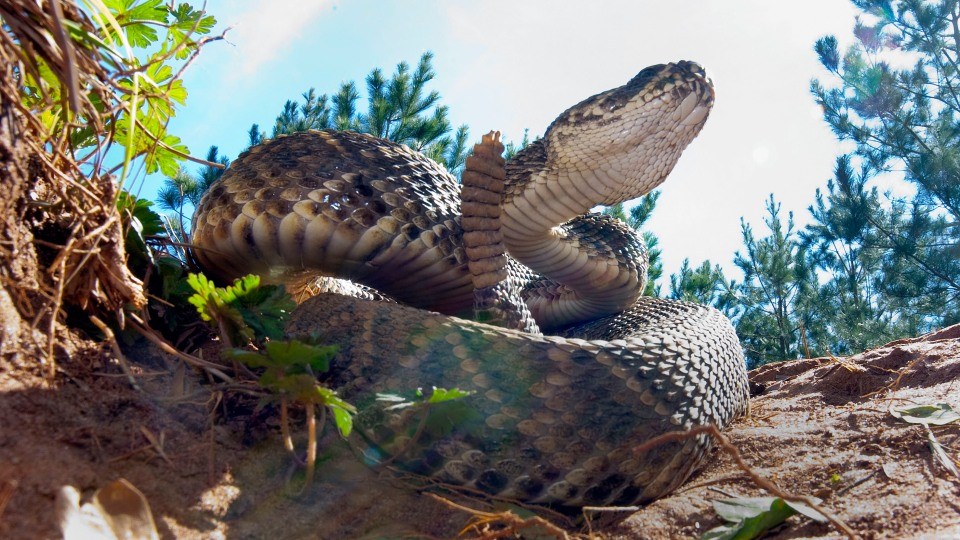Rattlesnakes are nicer animals when close to their kind: study
When they get into a group hug with other rattlers, the snakes get into a sense of well-being and tend to become more relaxed and calm in a process called social buffering.
-

A rattlesnake sits outside his hole during a rattlesnake hunt near Opp, Alabama, Tuesday, March 8, 2010. (AP)
A new study from Loma Linda University near San Bernardino, California, shows that the venomous rattlesnake seems to act in comfort when it is close to its own kind, just like people.
When they get into a group hug with other rattlers, the snakes get into a sense of well-being per the study published this week in the journal Frontiers in Ethology. It challenges the idea of the snakes being hunters with little emotion to display.
Chelsea Martin, a Loma Linda doctoral student in biology, worked on the research alongside her faculty adviser William Hayes, a professor of earth and biological sciences.
Ethology, which is the study of animal behavior, has always acknowledged that birds and mammals find comfort when physically close to their own kind. This closeness makes reptiles more relaxed which lowers their heart rates and stress.
"Unfortunately for rattlesnakes and other lower vertebrates and invertebrates, we seldom give them that credit," Hayes said, adding that "People are eager to just chop their heads off".
Read more: The US killed 200 animals per hour in 2021
"The animals are sentient, capable of emotions."
The motive behind the study came from Hayes during his time off when he is called upon to handle rattlesnakes caught by homeowners in Southern California.
Hayes says that he captures snakes in a bucket and carries them safely back into the wild, as they rattle furiously all the way. However, when there are two or more snakes in a bucket, the rattling tends to ease.
This calming effect is created when creatures are close to their own kind is called social buffering.
"It tells us that when they are with another snake it reduces their stress response," Martin said, continuing that "It has never been reported in reptiles before. It's something that humans do."
Martin used a heart-rate monitor made for humans to measure the stress levels in snakes.
"It lets us know as humans that, hey, we're not that different from these snakes," she said. "They are doing something we do."
Read next: Wildlife population drops 69% in under 50 years: Report

 2 Min Read
2 Min Read










